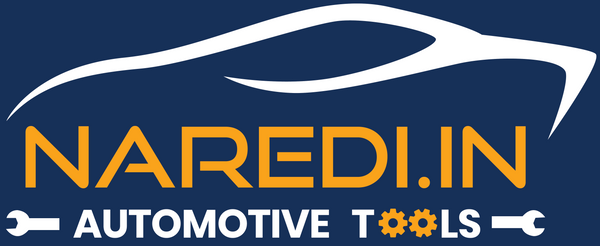
Car Battery vs Inverter Battery: Key Differences for Indian Consumers
Share
In today’s fast-paced world, batteries play an essential role in powering various aspects of our daily lives. Whether it's starting your vehicle or providing backup power during a power outage, the type of battery you use can significantly impact performance and longevity.
Two of the most commonly used batteries in Indian households and vehicles are car batteries and inverter batteries. Though they may seem similar, they are designed for very different purposes and have unique features. Understanding the differences can help you make informed decisions when buying or maintaining these batteries.
What is a Car Battery?
A car battery is a starting, lighting, and ignition (SLI) battery used in vehicles. It provides a short but powerful burst of energy to start the engine and then supplies power to the vehicle’s electrical system when the engine is off.
Most car batteries in India are lead-acid batteries and are usually rated between 35Ah and 90Ah, depending on the vehicle. They are designed for high cranking power rather than deep discharging.
What is an Inverter Battery?
An inverter battery is designed to provide a steady flow of power over an extended period. It is used with an inverter to provide backup electricity during power cuts—a common issue in many parts of India.
Inverter batteries are built for deep cycling, which means they can be discharged and recharged many times without damage. They typically have capacities ranging from 100Ah to 220Ah.
Car Battery vs Inverter Battery: Comparison Table
| Feature | Car Battery | Inverter Battery |
|---|---|---|
| Primary Purpose | Starting vehicle engines | Power backup for homes & offices |
| Discharge Nature | Short, high-current bursts | Long, steady power supply |
| Battery Type | Lead-acid SLI | Lead-acid (tubular, flat plate, etc.) |
| Capacity Range | 35Ah to 90Ah | 100Ah to 220Ah |
| Discharge Depth | Shallow discharge | Deep discharge |
| Recharge Cycle | Few cycles | Many recharge cycles |
| Build Design | Compact and lightweight | Larger and heavier |
| Maintenance | Low to medium | Medium to high (unless maintenance-free) |
| Lifespan | 2 to 4 years | 3 to 5 years (longer for tubular types) |
| Price Range (INR) | ₹3,000 to ₹9,000 | ₹8,000 to ₹20,000+ |
| Recharge Time | Fast | Slow (due to larger capacity) |
| Application | Cars, bikes, trucks | Homes, shops, small offices |
| Usage Environment | Mobile | Stationary |
Types of Car Batteries in India
- Lead-Acid (Flooded): Most common and affordable, but requires maintenance.
- AGM (Absorbent Glass Mat): Maintenance-free and durable.
- EFB (Enhanced Flooded Battery): Used in start-stop vehicles.
Popular Brands: Amaron, Exide, SF Sonic, Luminous
Types of Inverter Batteries
- Flat Plate Batteries: Affordable, ideal for short-duration power cuts.
- Tubular Batteries: Long life, suitable for long power outages.
- Maintenance-Free Batteries: Sealed, hassle-free operation.
How to Choose the Right Battery
- Application Needs: Cranking power for vehicles, deep cycling for inverters.
- Capacity: Match Ah rating to your requirement and device.
- Brand & Warranty: Opt for trusted brands with good support.
- Maintenance: Choose sealed batteries for convenience.
- Climate Suitability: Pick batteries designed for Indian temperatures.
Can You Use a Car Battery as an Inverter Battery?
Technically, yes—but it's highly discouraged. Car batteries are not designed for deep discharge. Using them with an inverter can result in quick degradation, poor backup time, and even inverter damage.
Likewise, using an inverter battery in a car is impractical due to its bulk and inability to deliver high cranking power required to start engines.
Environmental Impact & Recycling
Both battery types contain toxic materials like lead and acid. Improper disposal harms the environment. In India, used batteries are always returned to authorised recyclers or dealers offering buyback or exchange programs.
Follow the Battery Waste Management Rules (2022) to ensure safe recycling.
How to take care of your Car or Inverter battery
The technology for taking care of lead acid batteries is simple. Keep the battery charged above 80%. This prevents sulphation and extends life and performance. For this you need to follow simple steps
- Keep the terminals clean
- Keep the batteries in a well-ventilated place, and if in the car, do not try to remove them often.
- Use a Smart Charger which can evaluate the size, condition of the battery and provide a charge accordingly. The charger should be able to trickle charge and also maintain the charge.
- Recon the battery every 6 months to ensure the loosening of deposition of sulphates. Chargers like CTEK come with a dedicated RECON mode.
- Check the battery regularly using a reliable battery tester. The battery tester should be able to check SOH, SOC, Voltage and most importantly, Resistance. For car batteries, it is important to know the CCA of the new battery and measure it regularly.
- If Resistance goes above 15 Om then it might need to be reconditioned and if does not improve, then the battery I entering end of life. Id the CCA is too below the rated CCA, then the battery will lack the punch to start the car engine.
Conclusion
Car batteries and inverter batteries serve very different purposes. Choosing the right battery ensures optimal performance, cost savings, and safety.
Recap:
- Use car batteries for vehicles—they deliver short, high-powered bursts.
- Use inverter batteries for home backup—they support long, stable power delivery.
Always invest in the right battery type if you're looking for backup solutions or automotive power. It pays off in durability, efficiency, and peace of mind—especially in the demanding conditions of India.
